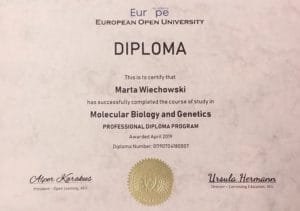Cascading Style Sheets, fondly referred to as CSS, is a simply designed language intended to simplify the process of making web pages presentable. CSS allows you to apply styles to web pages. More importantly, CSS enables you to do this independent of the HTML that makes up each web page.
CSS is easy to learn and understood but it provides powerful control over the presentation of an HTML document.
WHY CSS?
-
- CSS saves time : You can write CSS once and reuse same sheet in multiple HTML pages.
- Easy Maintainence : To make a global change simply change the style, and all elements in all the webpages will be updated automatically.
- Search Engines : CSS is considered as clean coding technique, which means search engines won’t have to struggle to “read” its content.
- Superior styles to HTML : CSS has a much wider array of attributes than HTML, so you can give a far better look to your HTML page in comparison to HTML attributes.
- Offline Browsing : CSS can store web applications locally with the help of offline catche.Using of this we can view offline websites.
CSS Syntax
A CSS comprises of style rules that are interpreted by the browser and then applied to the corresponding elements in your document.
A style rule set consists of a selector and declaration block.
Selector => h1
Declaration => {color:blue;font size:12px;}
-
- The selector points to the HTML element you want to style.
- The declaration block contains one or more declarations separated by semicolons.
- Each declaration includes a CSS property name and a value, separated by a colon.For Example:
-> color is property and blue is value.
-> font size is property and 12px is value. - A CSS declaration always ends with a semicolon, and declaration blocks are surrounded by curly braces.
Free Certification
Academy Europe presents high-quality formal diplomas, certificates and e-certificates which are formal proof and recognition of accredited online courses. It shows all student’s abilities to learn and achieve high results and is very useful to promote personal career including with CVs, job applications and self improvements.
How can you get your certificate at Academy Europe?
- You must click “complete” link at the end of every lesson of your course after you finish them.
- When you finish all lessons of course, the “finish course” link is going to be active at the end of last lesson.
- When you click the “finish course” link, you will finish your course on Academy Europe officially. Then, “certificate” page of you completed course will be automatically active.
- You can see and download your certificate online after you click on your “certificate” link.
Samples: Horizantal Diploma – Horizantal Certificate – Vertical E-Certificate

Prerequisites
The basic knowledge of Graphical User Interface, Object Oriented Programming and software tools and menus are the only prerequisite for this tutorial.
Before you start proceeding with this course on Academy Europe, we are assuming that you have a good aptitude and can think logically. You should want to try something different.
Ideal candidates for the course would typically possess:
– Discipline and attentiveness
– Ability to conduct research
– Ability to perform tasks with speed, efficiency, and accuracy
– Analytical judgment
– Patience to interpret technical/scientific data
– A willingness to learn, roll up your sleeves and work toward your dream!
– A computer, tablet or smartphone and an internet connection
– Basic computer skills
Audience
This tutorial has been intended for the users willing to take the human computer interactions as a next level of study in their career.
This course by Academy Europe aims at imparting quality education and training to students.
Academy Europe is dedicated to its students, their specific learning requirements, and their overall learning success.
This course is directed toward a student-centered, independent study, asynchronous learning approach.
After completing this course on Academy Europe, students will get self improvement and promotion in their careers.
This course is based on at least two learning skills which are provided to the users through audio & visuals, videos, verbal presentations and articles, all of which are asynchronized with distance education approach.